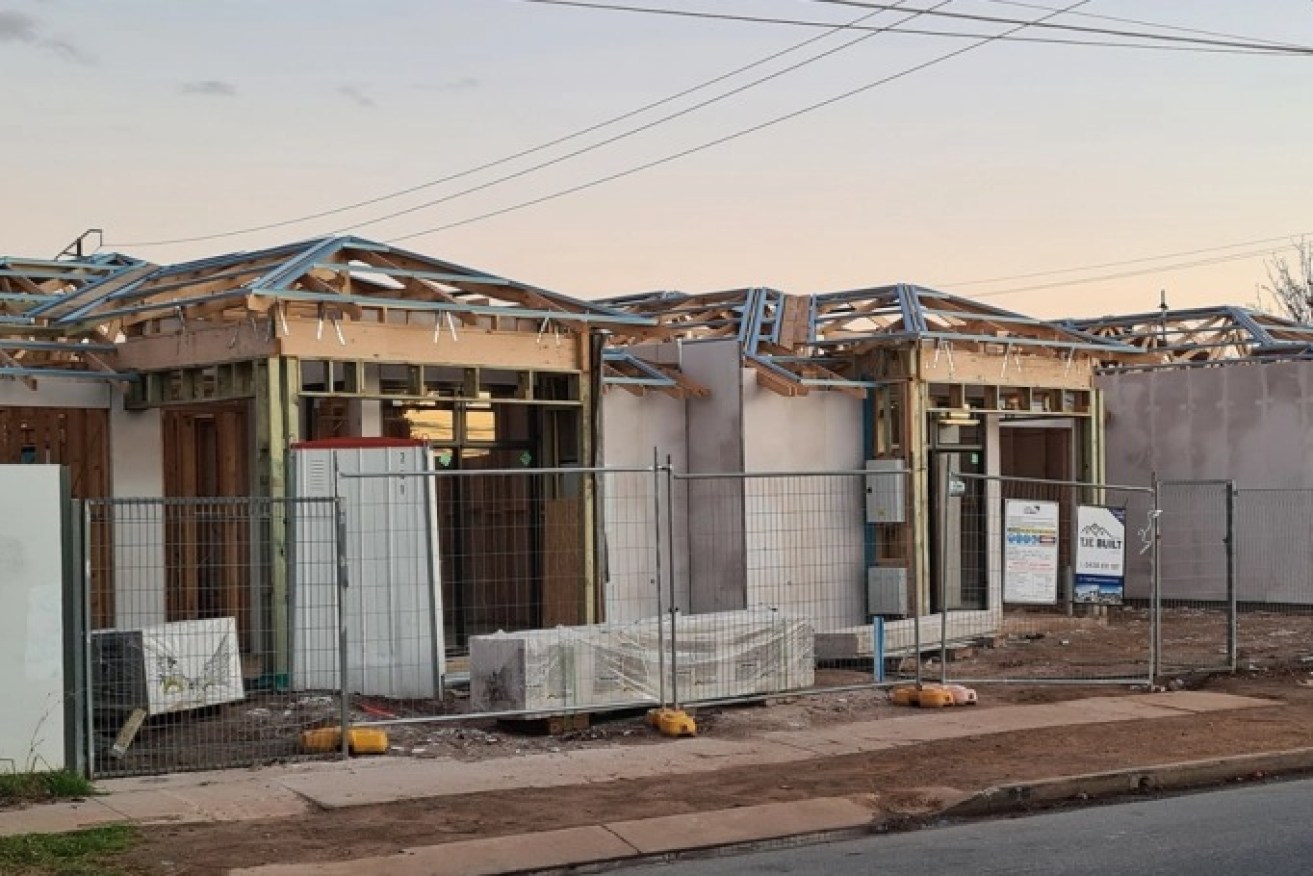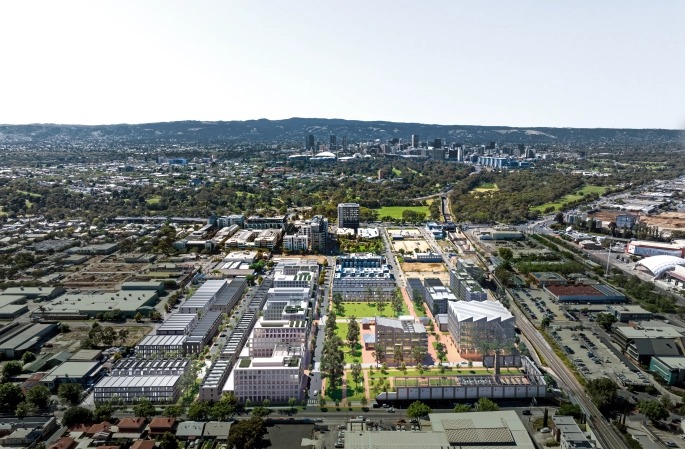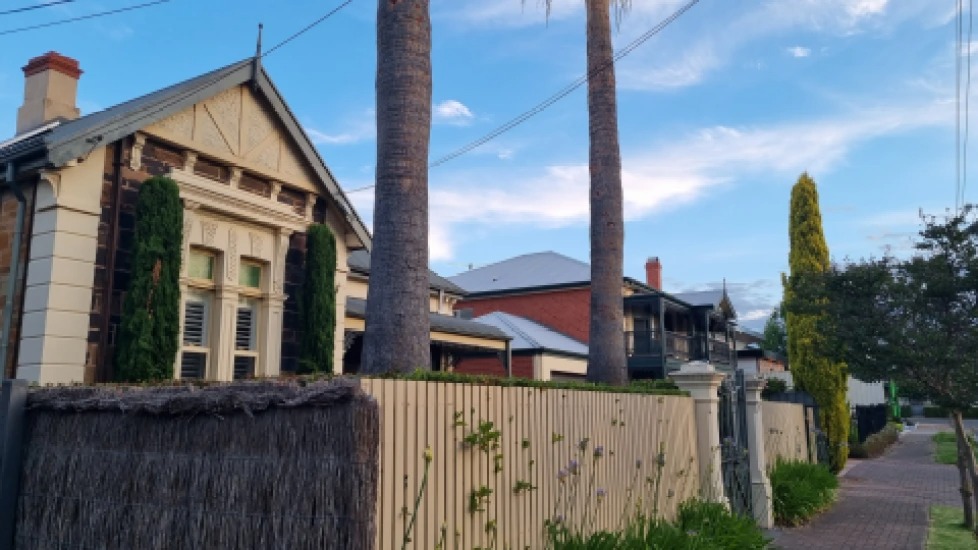Developers steer away from ‘ad hoc’ Adelaide urban infill
The state’s urban development lobby says there should be a “reduction in general infill development”, arguing housing affordability would be helped by more master-planned communities, greenfield developments and CBD residents.


Subdivision at Morphettville. Photo: Andrew Spence.
In a wide ranging submission to the state government’s expert panel review of South Australia’s planning system, the Urban Development Institute of Australia SA division (UDIA) has called for a new 30-Year Plan for Greater Adelaide which “must address the over reliance in housing supply of single dwelling subdivisions”.
The Institute submitted that strategic infill – significant residential developments on large land parcels such as Brompton, Bowden, Lightsview and AAMI Stadium – is preferred over demolition of old housing stock and replacement with higher density homes as it “provides optimum opportunity to master plan the regeneration of areas”.
“UDIA believes that without necessary and thorough planning, ad-hoc general infill development can adversely change the character of our existing suburbs and streets and note that much of the public discussion and policy questions raised in this review relates almost entirely to general infill,” the Institute submitted.
“The UDIA believes there should be a reduction in general infill development and refocus on strategic infill in identified sites and this should be carried out together with a more realistic appraisal of the development ready pipeline for major greenfield developments.”
The Institute, which represents developers, consultants, corporations and small companies, is one of more than 600 groups to have made a submission to the expert panel’s review, led by former UDIA SA division president John Stimson.
The review, commissioned by the Malinauskas Government in August last year, is examining contentious areas of the Planning and Design Code such as urban infill, car parking, heritage, character and trees.
A report with recommendations for reform will be handed to Planning Minister Nick Champion later this year.
The UDIA submitted that strategic infill “can assist in optimising the urban tree canopy [and] on-street car parking provision” and results in “better infrastructure co-ordination and development outcomes”.
“A new 30-Year Plan could recognise more large-scale strategic infill projects and work to unlock medium to higher density projects in appropriate areas,” it said.
“Better planned and more sustainable developments can include open space and provide for suitable infrastructure upgrades.
“Similarly, there should be a more strategic commitment to revitalising the City of Adelaide with more residents.”

An aerial render of MAB Corporation’s strategic infill plan for the Brompton gasworks site, featuring around 600 apartments, 200 townhouses and a 120-room hotel. Photo: Renewal SA/MAB Corporation
According to a 2021 PlanSA report, general infill accounted for 37 per cent of all net dwelling increase in Greater Adelaide from 2010 to 2019.
Strategic infill accounted for 30 per cent while greenfield sites only contributed 19 per cent.
In gross terms, 49,600 new general infill dwellings were constructed from 2010 to 2019, compared to 22,600 strategic infill dwellings.
UDIA SA division CEO Pat Gerace told InDaily more work needed to be done to identify strategic infill and greenfield locations if the “reliance” on general infill subdivisions is to be reduced.
“What that type of [general infill] housing does, if it’s relied on too much, it does create a lot of angst within existing suburbs and communities where you see the impacts that are not catered for in respect to traffic management [or] where there’s no new open space created,” Gerace said.
“So you could see suburb after suburb being redeveloped where houses are knocked down and rebuilt, but no real increase in amenity or investment in that particular area as it relates to infrastructure.”

Increasing demolitions for general infill housing has raised community angst on issues such as local infrastructure and character. Photo: Thomas Kelsall/InDaily
According to the PlanSA report, the top areas for general infill between 2010 and 2020 were Campbelltown (estimated net dwelling increase of 552), Morphett Vale (489), Seaton (478) and Magill (375).
The top areas for strategic infill were the Adelaide CBD (4800 new dwellings), Lightsview (2228 new dwellings), Mawson Lakes (1693 new dwellings) and the Urban Corridor (1529 new dwellings).
“When you can identify those (strategic infill and greenfield sites) and you can move quickly, what we can do is reduce the reliance on those houses that are knocked down and rebuilt,” Gerace said.
“We don’t believe that should be such a significant reliance on that particular type of supply for housing.”
Gerace said a lack of “development-ready land” has put “pressure on housing affordability”.
He also said the CBD “can play a role in terms of having more people living in it”.
“We do need to have more people living in our CBD to be able to keep workers in particular to be able to service all the things that we enjoy,” he said.
“To have more people live in the CBD, I believe it needs to be a lifestyle choice and a lifestyle destination, more so than just a place that people commute to for work.
“Unless and until you’ve got that vibrancy for residents, it’s always going to be a bit of a challenge.”
The UDIA also submitted that the Planning Commission’s five-year reviews of potential new land supply in Environment and Food Production Areas “is simply too infrequent”.
“This is, and will continue to be, a foundational issue to the inadequacies in land supply across Greater Adelaide and prolong the housing affordability crisis,” it said.
The Institute is not the only group to call on the planning review to consider an urban infill rethink.
The Liberal Party submitted to the review last month that “increasing subdivisions in residential areas has resulted in the loss of established trees and gardens, increased stormwater run-off, pressure on existing council infrastructure, lack of on road carparking, and concerns in the community about the changes to the amenity and liveability of neighbourhoods”.
The public consultation period for the expert panel review ended on Friday, December 16, although councils can still provide submissions until January 30 due to November’s local government elections.




